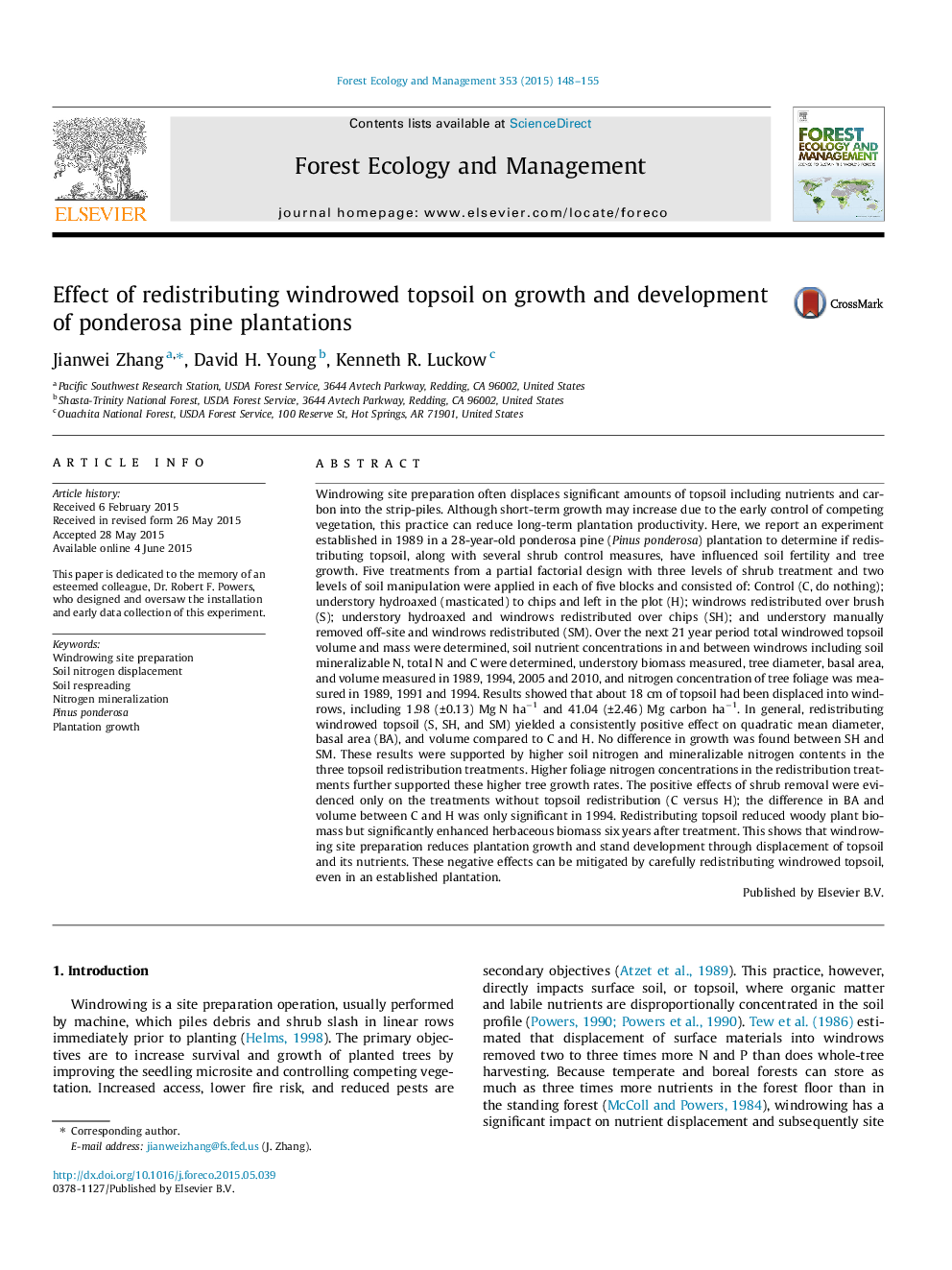| Article ID | Journal | Published Year | Pages | File Type |
|---|---|---|---|---|
| 86227 | Forest Ecology and Management | 2015 | 8 Pages |
•We studied if redistributing topsoil mitigated impacts on soils and stand growth and development.•Windrowing site preparation displaced significant amounts of topsoil and N–C pools into strips.•Redistributing windrowed topsoil increased soil nitrogen and mineralizable nitrogen contents.•Higher available nitrogen yielded higher foliage nitrogen concentrations in ponderosa pine.•Redistributing topsoil enhanced tree growth and altered understory species.
Windrowing site preparation often displaces significant amounts of topsoil including nutrients and carbon into the strip-piles. Although short-term growth may increase due to the early control of competing vegetation, this practice can reduce long-term plantation productivity. Here, we report an experiment established in 1989 in a 28-year-old ponderosa pine (Pinus ponderosa) plantation to determine if redistributing topsoil, along with several shrub control measures, have influenced soil fertility and tree growth. Five treatments from a partial factorial design with three levels of shrub treatment and two levels of soil manipulation were applied in each of five blocks and consisted of: Control (C, do nothing); understory hydroaxed (masticated) to chips and left in the plot (H); windrows redistributed over brush (S); understory hydroaxed and windrows redistributed over chips (SH); and understory manually removed off-site and windrows redistributed (SM). Over the next 21 year period total windrowed topsoil volume and mass were determined, soil nutrient concentrations in and between windrows including soil mineralizable N, total N and C were determined, understory biomass measured, tree diameter, basal area, and volume measured in 1989, 1994, 2005 and 2010, and nitrogen concentration of tree foliage was measured in 1989, 1991 and 1994. Results showed that about 18 cm of topsoil had been displaced into windrows, including 1.98 (±0.13) Mg N ha−1 and 41.04 (±2.46) Mg carbon ha−1. In general, redistributing windrowed topsoil (S, SH, and SM) yielded a consistently positive effect on quadratic mean diameter, basal area (BA), and volume compared to C and H. No difference in growth was found between SH and SM. These results were supported by higher soil nitrogen and mineralizable nitrogen contents in the three topsoil redistribution treatments. Higher foliage nitrogen concentrations in the redistribution treatments further supported these higher tree growth rates. The positive effects of shrub removal were evidenced only on the treatments without topsoil redistribution (C versus H); the difference in BA and volume between C and H was only significant in 1994. Redistributing topsoil reduced woody plant biomass but significantly enhanced herbaceous biomass six years after treatment. This shows that windrowing site preparation reduces plantation growth and stand development through displacement of topsoil and its nutrients. These negative effects can be mitigated by carefully redistributing windrowed topsoil, even in an established plantation.
